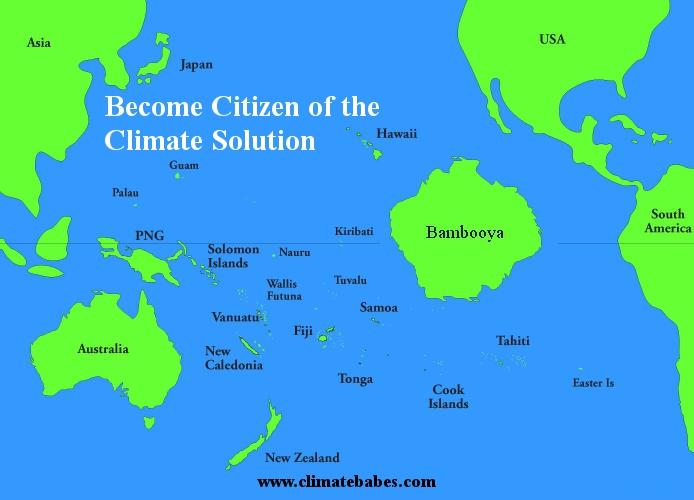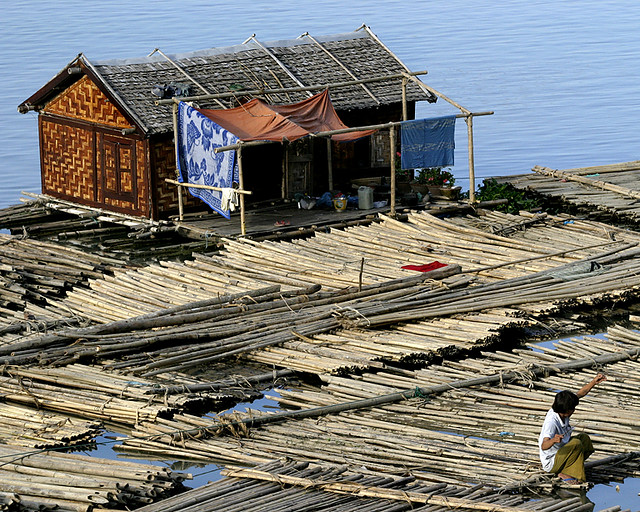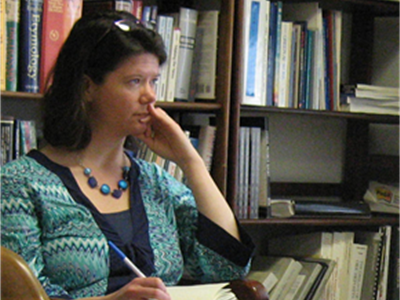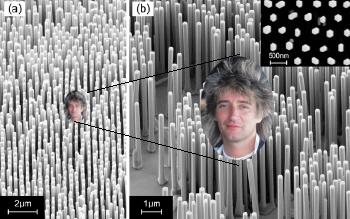The Carbon/Credit system is the system by which carbon fuels are distributed through the extention of credit (our money). Credit is used to enable production because it allowes owners of machines and vehicles to buy energy. Say a manufacturer wants to make a new product. He writes a business plan goes to a bank that creates the credit. With the credit he can buy the materials and resources to make his product. Then he sells it and makes a profit. Almost every step in this proces requires energy in some form, and this energy he buys with the credit he got from the bank, and later with the credit he gets from the customers. If he would not be able to purchase any form of energy with his own or his customers credit he would not be able to run his business. His ability to buy energy, especially fossil fuels, is no accident, it is possible because there is a well managed relation between the amount of credit in circulation and the amount of fossil energy for sale. This is what we (I) call the Carboncredit system. It’s main challenge is to maintain price stability through the management of credit vis a vis (fossil fuel) energy supply.
Fuel cartels
Throughout history there have always been fuel cartels, either for wood, coal, peat. These fuels where used for baking and heating homes. When the steam engine was invented however the fuel started to be used to produce, Increasing amounts of products where produced using coal, and the amount of goods that became available to be traded became proportional to the amount of coal that was available, not to the amount of workers like before. This meant that instead of money supply proportional to the amount of workers (which would be pretty constant, making gold and silver well suited) one needed money in circulation proportional to the utilisation of carbon. This need formed the basis of economic thinking, which has as its core purpose : Maximizing the utilisation of fossil fuels. This meant people got more money than before, there was more to trade wealth was increasing in the industrialized zones of the world which ran the fuel cartels.
Gold and silver where replaced by fait money to unleash the productive power of fossil fuel
This became a problem for traditional credit based on the loaning out of gold and silver, because that supply of money could not expand with the supply of fossil fuels, which turned out to be in pretty limitless supply. When oil started to be used the gold and silver started to end up with the suppliers of oil. They (Iran, Saudi Arabia etc.) would eventually have all the gold and silver no matter how low the price of the fuel would be. So banks decided to create a new money system, the ‘Carboncredit’ system. It was the system in which fiat money was used to distribute fossil fuels. Worthless paper was made able to buy valuable coal, oil, gas is if they where good as gold. The gold standard was later abandoned, and a powerbase in the Middle east we know as Israel was established to police the supply of oil to the UK and US (under Nixon) and their allies. Saudi Arabia always chose to serve the cartel, other countries wanted more independence, but usually didn’t have it for long. Oil is like a hot young woman stuck in a mining town, sooner or later she has to choose her man or get raped, like Iraq, Iran, Lybia and other oil/gas rich countries.
Credit as we know it is only possible if it means immediate access to productive capacity. That means you have to have energy reserves, and the type thats ideal is fossil fuels.
So this is how the petrodollar came about, a term that neatly translates in carboncredit, with the distinction that all fiat currencies are carboncredit but there is only one petrodollar. The strength of the petrodollar is being guarded, meaning noone is allowed to trade oil in other currencies directly, or was. When the petrodollar was 100% secure this meant the US could always afford oil and other countries had to trade with the US in order to get oil. This situation has weakened now and China and Russia and other countries trade oil in their own currencies. This means the US has lost control over these two countries as well as its own wealth. Maybe soon we will need to get Rubbles to buy oil. This is the reason for the current military instability, because it is the armies that secure the wells that provide the oil that backs the carboncredit.
Why oil dominates
Oil is stinking gue, it is toxic. For thousands of years it was barely used, bitumen was found in the ancient Iraqi batteries for insulation but (lucky for us) engines running on oil are only very recent. It took a while and the invention of the steam and later the internal combustion engine to make oil a usefull material, the initial users being ships of the royal navy, boosting englands military might. In the beginning when money was gold and silver and middle eastern rulers had few engines using fuel, cars, planes, etc. They simply accepted the gold and silver from the westen banks for the oil. Later more force was used to secure the (essentially free) supply to the west.
Today the tables are turned. Oil companies are in charge. They don’t need money to get the oil out of the ground. To do anything with machines you need fossil fuels, so as long as oil companies have a stash of diesel somewhere they can continue drilling, and whatever they get out of the ground they can trade for what they want or convince a bank to print money to sell. So carbon is leading the financial system, and the financial system needs carbon. If you know carbon will be for sale, you can extent credit to the person buying it. The Rothschild bank tried to achieve such an ideal situation through participation in the Indonesian coal reserves, but kicked out when they staged a ‘coup’. As a result the Rothschild are withdrawing from Asia. Banks and oil/coal and gas companies are always cooperating even if they will swear they are not.
Everything is carbon
The carbon credit system works as long as the supply of carbon fuels is there. Its distribution is easy to control through banks and fossil fuel markets with one price for large regions. Because of the myths of economics people don’t realize this interdependence, especially because the price is kept almost marginal. This makes people follow economic principles without needing reinforcement. The ‘installed’ economic belief system controls people without them even being aware of it. People think they are clever when they ‘get’ economics, there’s an element of magic to it because for a long time the economic system worked as advertised. But if the fossil fuel supply collapses or gets seriously interrupted no economic theory or principle holds anymore, because the credit becomes worthless, and new credit only results in inflation.
Destroying Credit
Credit (the majority of it) constantly flows through the system, is created and destroyed. This allows banks to make sure that the amount of credit that can directly buy fossil fuels (at the gas station or in the factory, logisics chain etc.) is under strict control. To release more credit when fuel is plentifull banks use bubbles and talk about a positive economic outlook. They simply start valueing objects higher to distribute more credit. Then when fuel supply can’t meet demand they retract credit and say ‘it was irrational exhuberance’, you lost at the stock market, the bank needs to increase liquidity (the BIS makes sure that happens so nobody can say it’s to control fossil fuel consumption). The cycles give them ever increasing control over assets, as their owners predictably default. At any time though banks can come up with an excuse to retract or extend credit reduce or increase ‘liquidity’ so that prices remain stabile (and banks don’t have to change all their contracts, loans and mortgages). The goal of price stability links fossil fuel dependent production with the amount of money directly able to buy fossil fuels, it defines the carboncredit system.
The only real incarnation of debt in our society is the extra CO2 we find in our atmosphere, other than that it is just a tool
Debt in this system is just a tool, not a real thing. The fuel that was bought with the credit that we owe has been burned, noone can repay itl. People that owe debt are caught in the illusion they can somehow repay their creditor, but they can’t. Nobody makes fossil fuels nobody has a workshop that churns out oil. This is a fact and banks know it. They know we buy fossil fuels with the credit we get, and will have to be rescued by new credit (debt).
Debt is however very usefull because it allows banks to control the amount of carboncredit in circulation (meaning the amount of fiat currency). And as fossil fuels become more and more scarce, debt helps the banks to cut the supply and make people agree. Having debt is shamefull, and being poor because of it is just.
Today if one creates credit without making fossil fuel available one stokes inflation, if one makes fossil fuels available without credit one stokes deflation. To retain stabile prices the amount of credit must be managed vis a vis the amout of fossil fuels
Our carbon based economy has been developed to increase the power of banks, to secure their position. The more carboncredit flowed, the more they held the reigns of society. Economics has been the belief system that was propagated and used to justify and lubricate this process. The whole thought matrix of competition and scarcity was created because it provided a decentralized way to ensure expansion of the utilisation of carbon fuels. People think economics is a neutral theory, it is not, it is a marketing strategy for fossil fuel, an ideology.
The growth in wealth around the world as a result of the use of fossil fuel is incredible. Of course with so much stored sunlight to release productively the effect has been highly positive. The ability to achieve so much for so many people has been a major benefit of the petrodollar and carboncredit, it created a disciplined planet where major benefits where shared because sharing it caused more utilisation of fossil fuels than hoarding it. This system must however be dismatled now because it threatens our lives and futures, primarily because of wars over fossil fuels, secondarily because of climate change caused by their use.
Carboncredit Capture
Now we are in a phase of carbon credit ‘capture’. As the supply is shrinking the amount of credit circulating has to shrink. This is the economic crisis that started in 2008. Together banks are trying to put on a play that somehow the amount of credit is a problem. What they are doing is hiding the fact the amount of fossil fuels is the problem. They hide this relation because if people would know why things are slowing down they would bypass the banks and demand rationed and targeted use of the remaining carbon reserves towards the transiton to renewables. Banks behave like diving instructors running out of oxygen about 100 feet under water deciding to just keep going to not lose control over the other divers.
The way to untangle us from the carboncredit system
There’s three aspects to the system,
- The debt structures, which are about ownership and control of assets.
- The real economic structures, which are about keeping people alive and happy.
- The carbon power structure, which is the fundamental control over oil, coal and gas.
At the moment the three are entangled in a loose kind of way, they operate on the basis of habit and trust in the stability of relations. Money is respected in the market. Once things come apart or are taken apart this will change, and the complexity now providing security to all may be replaced by simple rules that are easy to enforce.
The fundamental problem without any intervention is that we depend on oil, yet our exit from oil is prevented because the credit system depends on oil. If we manage to replace oil by local renewables, we free ourselves of the banking system. We must therefore first take control of that system or take control of the resources directly. Both steps can be responded to by the financial system with a crash, basically a strike of services. As long as it is not understood the whole credit system is the opponent, no governments or group of them will be able to go through that phase without political damage.
The recognition of the carboncredit system is urgent because left to itself the strugling banks will drive the population into poverty and war while wasting fossil energy needed for any transition. So before society starts to polarize and break apart, one needs to find a way to install a government that wants to take the necessary steps. If this isn’t possible it creates the basis for a revolutionary movement, which may lead to chaos and can even be hijacked by the banks. The best option is to start moving on the solution which has to do with finding alternative energy sources.
If we clear our minds of any history and look at reality we know that to survive we need to somehow extract what we need from our environment. If we are not going to use fossil fuels we have to use renewables. Luckily we have industrialized so if we have access to energy we have machines to multiply our productivity, we have all kinds of technology to enhance our chances of survival. So the solution to the downward spiral described above is renewable energy, preferably the easiest most useable form.
The strategy would be to use any remaining fossil fuel resources to build a renewable energy base as soon as possible. Once we have enough renewable energy sources we can make new ones with renewable energy, creating a consolidating positive feedback loop leading to renewable energy abundance.
In the mean time instead of using fossil based technolgies we can shift to renewable based technologies, in farming but everywhere else. In cases where that transition is to expensive we can consider sticking with fossil equivalents, like synthetic methane for cooking in Holland, so called Power2Gas.
Of the three aspects above only the real economic structure counts. The debt can become managed by the government, and cancelled if the owner of the debt does nothing interesting in the real economy. Banks own mortgage debt, but don’t do anything usefull with it (they use it to shrink carbon consumption), so if it’s a burden on people then it can be reduced (of course houses remain valuable). Primary consideration should be : Are we flexible enough to make the transition.
The carbon power structure should equally be put under control of an organization with the goal to replace the use of carbon, in tandem with the approach to debt above. Society can deal with not being able to drive for a while, as long as it is clear what’s the plan. But the sovereignty of fossil fuel companies will be out of the question.
To transition we propose to use three currencies instead with specific value types in terms of energy. The Auro for manual labour, is a gold/silver coin that made in proportion to the actual workforce. The Euro is pure carboncredit in the classic sense, and can only be extended by government to power the transition. The Joule is the new energy currency for renewables and is extended by local management of the power sources or government in the form of a flat living wage to every citizen. These currencies have their intricacies that require further rules to be set, you can read about it in “The Euro, Auro and Joule”. The creation of storeable energy sources like gas, ammonia, biofuels will enable a lot of normal activities to continue.
Ultimately the world will emerge from its carboncredit domination and know how to keep itself alive for eternity using the sun, the wind, waves, geothermal energy. Of course eternity can turn out to be a flash if we don’t also deal with climate change. So that will be the concurrent task, to fight climate change using renewables. There really is no other option because climate change makes our oceans so toxic we won’t be able to breath eventually. All the real damage is still avoidable and reversible. You can see the CO2 respiration of Earth every year, so CO2 levels can go down, the Earth can cool down (it does every night) and things can go back to normal or even beter, go forward to a greener cleaner, healthier world than was ever known. This is what we call the Roboeconomy, the world in which robots will restore the ecology and form the basis of the economy.
The way to streamline this transition without touching the current economies would be to develop so called extraeconomic initiatives. These are strickly renewable based development initiatives in remote areas. The objective is not to mix with the existing economy at all, but to build ecological and climate change mitigation projects that sustain their own growth while keeping the participants alive.









